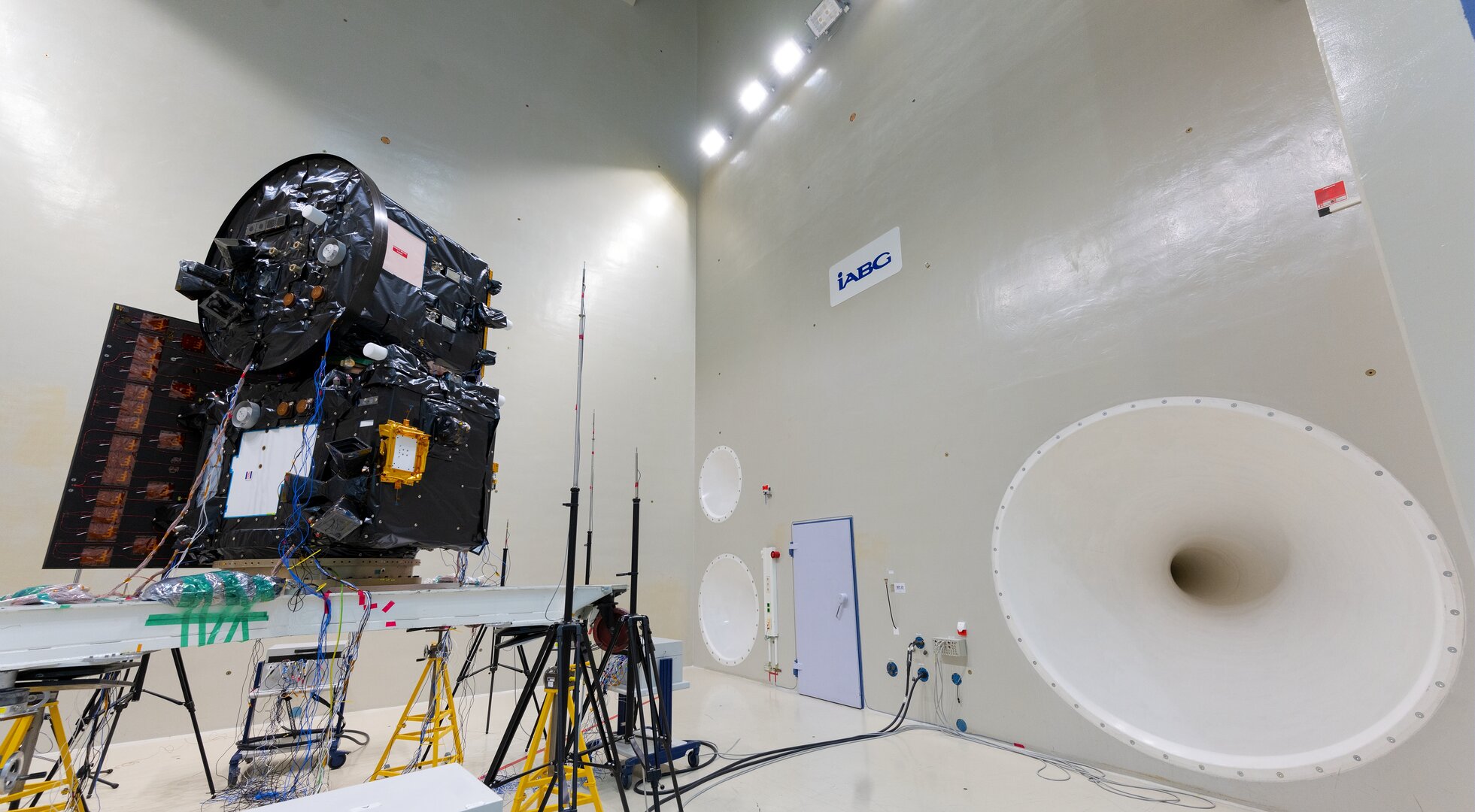Sun-watching Proba-3 formation flyers tested for take-off
15/06/2023
97 views
5 likes
ESA’s pair of Sun-watching Proba-3 satellites have been placed in take-off configuration, one on top of the other, for testing in simulated launch and space conditions at IABG in Germany, ahead of their planned lift-off next year.
Proba-3 is made up of two satellites being launched together into orbit for a single mission. The pair will fly in precise formation relative to one another to cast a sustained shadow from the disk-faced ‘Occulter’ spacecraft to the ‘Coronagraph’ spacecraft, allowing the observation of the inner layers of the Sun’s faint corona, or atmosphere, which are normally concealed by the brilliance of the solar disc.
The satellites were completed in the spring, and were then shipped to IABG for testing. IABG is one of a trio of European satellite test centres equipped with facilities to simulate every aspect of the space environment.
“Our first priority is to be sure the pair will endure launch stresses, so once the Coronagraph spacecraft was placed on top of the Occulter spacecraft the combined stack was put through ‘sine’ testing – where we put them on a shaker table to subject them to vibrations of steadily increasing frequency to identify any resonant frequencies that might cause damage,” explains Alexandru Vargalui, Proba-3 structural engineer at ESA.
“Next came acoustic testing, where the spacecraft stack is blasted with noise levels representative of a launcher take-off.”
Having established Proba-3’s fitness to fly, the next step was to perform deployment mechanisms testing, trying out the systems that will separate the pair from their upper stage, and each other, as well as, crucially, the solar array drive mechanisms that will turn their solar panels towards the Sun, allowing them to charge up in orbit.
The next test stage will be one unique to this mission, explains Damien Galano, Proba-3 project manager: “For the Proba-3 pair to maintain their positions relative to each other down to millimetre-level precision, they employ a range of guidance, navigation and control systems. We are taking advantage of the large amount of space available at IABG to test Proba-3’s vision-based sensor system. This combines cameras on the Occulter spacecraft with bright LEDs on the Coronagraph spacecraft to allow them to find each other and estimate their distance apart.
“With this system designed to operate across up to 250 m between the two satellites, we need a wide space to test it – so we’ve previously made use of the main corridor of ESA’s ESTEC technical centre in the Netherlands.”
Following that test, Proba-3 will undergo more traditional ‘thermal vacuum’ testing – involving the satellites being operated in space-quality vacuum for a sustained period of time while also being exposed to orbital-style temperature extremes, space being a place where it is possible to be hot and cold at the same time, if parts of your structure is illuminated by sunlight while others are in shadow.
Once the environmental campaign is complete, the satellite pair will return to Belgium to complete functional verification.
Proba-3 is due to be flown by a PSLV launcher from India next year.
For all the latest Technology News Click Here

